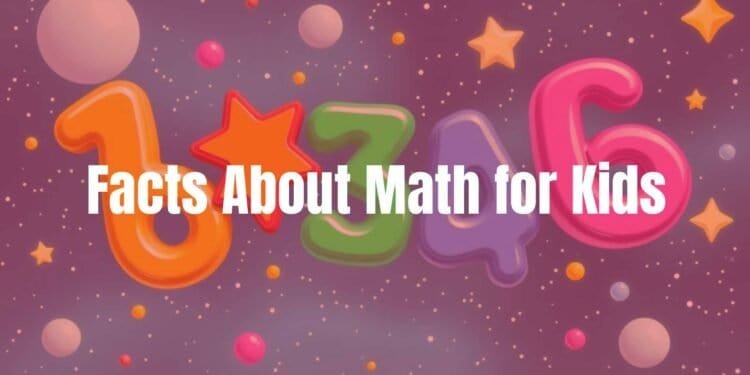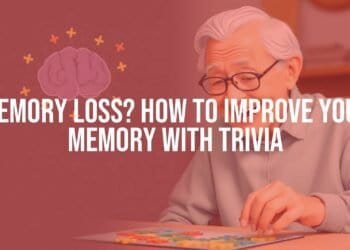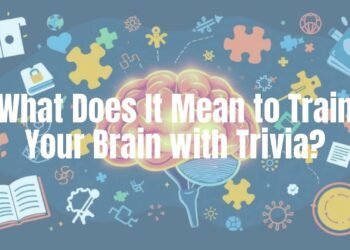Math often seems hard, with tricky formulas and lots of steps. But math can be exciting and full of surprises, especially for kids. It’s more than numbers on a page. It helps explain how things work and shows patterns in everyday life. From prime numbers to the Fibonacci sequence, math is full of cool ideas to explore.
This article makes math clear and fun. We’ll explain why math matters, share surprising facts, teach simple tricks, and show how math appears in places you might not expect. Get ready to see numbers in a new way!
Why Is Math Important for Kids?
Math is more than a school subject; it’s a basic skill that helps kids in many parts of life. Knowing math helps kids handle daily situations, make smart choices, and build strong thinking skills. It’s like a superpower for spotting patterns, solving puzzles, and thinking clearly.
Learning math early, even through games, can shape a child’s growth. It builds a strong set of tools they can use to face challenges in and out of school, while growing confidence along the way.
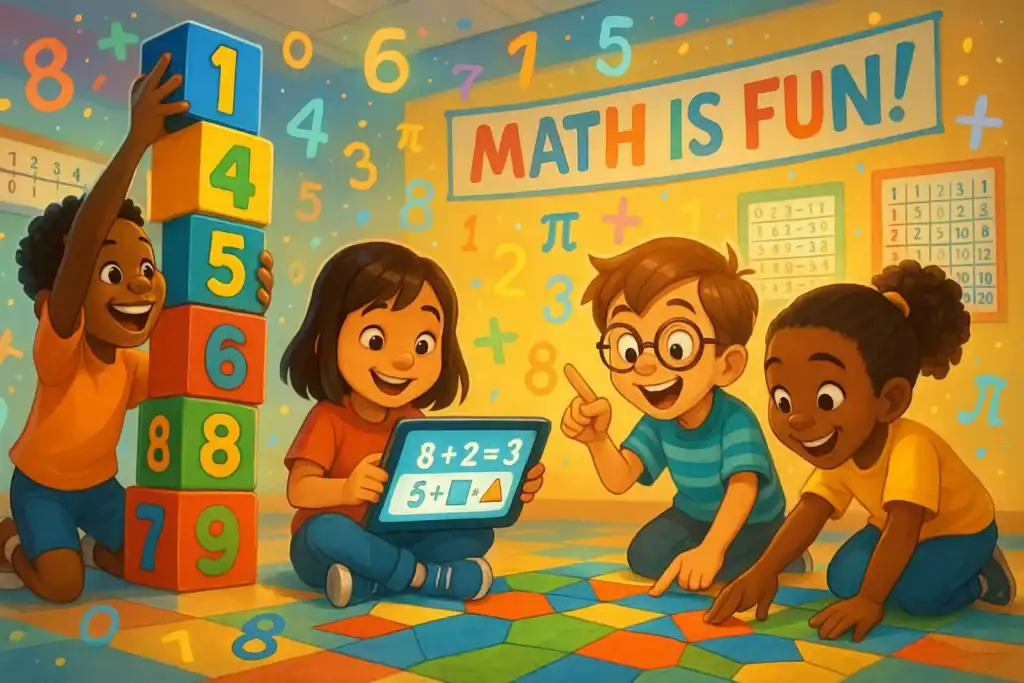
Math Improves Problem-Solving Skills
One big benefit of learning math is better problem-solving. Math problems, from simple sums to harder equations, teach kids to study information, break problems into steps, and try creative ideas. These skills help far beyond homework.
When kids meet a tough problem, they plan, test different methods, and keep going until they find an answer. This steady, logical way of thinking helps with real-life challenges and teaches that many problems have more than one path to a solution.
Mathematics Builds Logical Thinking
Math trains the brain to think logically. It teaches kids to follow steps, spot cause and effect, and build clear arguments. Each time a child solves an equation or a geometry puzzle, they practice careful reasoning. It’s not just about the answer-it’s about understanding why the answer makes sense.
This organized way of thinking is key for understanding complex ideas, making sound choices, and catching mistakes. It supports success in science, technology, engineering, and many other areas.
Math Is Used in Music, Sports, and Art
Math isn’t stuck in textbooks; it shows up in music, sports, and art. In music, notes have exact frequencies, and harmony comes from simple ratios. An octave is a 2:1 ratio, which creates that pleasing sound. Even piano keys follow patterns.
Sports fields use geometry: a baseball diamond is a square; basketball courts have fixed rectangle sizes; and soccer balls are made from pentagons and hexagons for better aerodynamics. Artists and architects have used the Golden Ratio (about 1.618) for centuries to make designs that look balanced, from Renaissance paintings to buildings like the Parthenon. Math helps us see more in these areas.
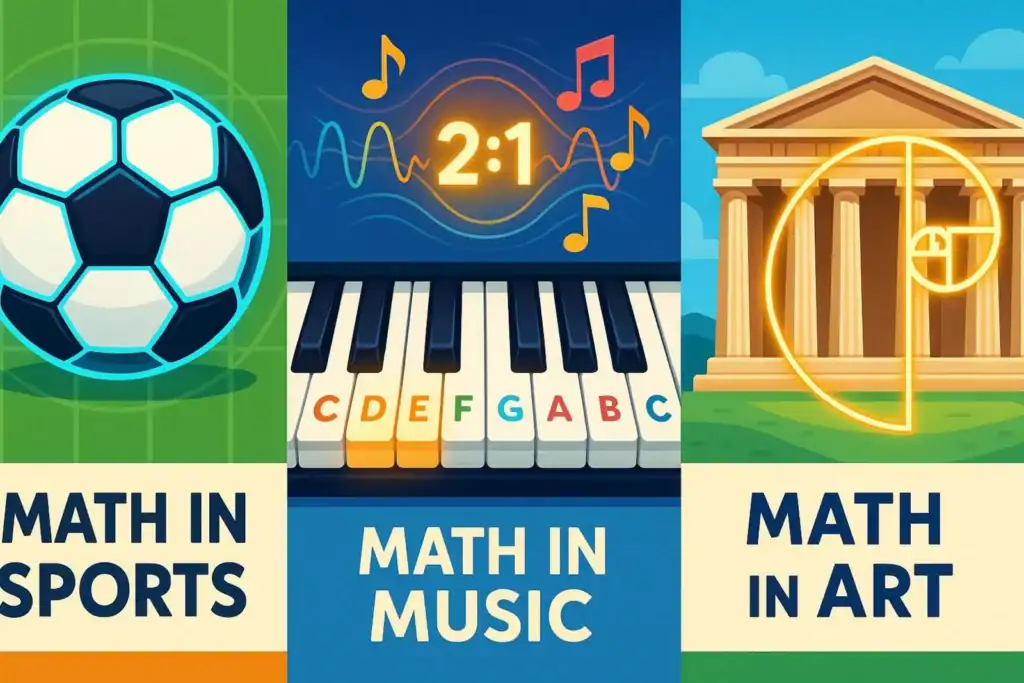
Knowing Math Helps with Future Careers
In today’s fast-changing world, math supports many careers. Engineers, data scientists, architects, and software developers use math every day. Even fashion designers rely on math for sizing, fitting, and turning flat patterns into clothing that fits a 3D body.
Outside of STEM, strong math skills build clear thinking and problem-solving in any job. Kids who learn math can read data, handle money, and make logical choices, which helps in a global, data-filled economy. The math kids learn now can open doors later.
What Are the Most Interesting Facts About Math for Kids?
Math isn’t just calculation. It’s full of odd facts and neat truths that make learning fun. These ideas can turn numbers into a place for discovery.
From hidden patterns around us to rules behind numbers, these facts show the playful side of math. There’s always something new to learn.
Math Is Everywhere in Daily Life
Math is all around us, even if we don’t notice. From alarm clocks and digital time to patterns in floor tiles, math is at work.
At the store, you estimate costs, figure out discounts, and compare unit prices. Cooking uses measurements, ratios, and timing. Video games use coordinates, stats, and probability. Traffic lights use timing to keep cars moving, and your credit card stays safe thanks to math-based security. Seeing these links helps kids view math as useful and part of daily life.
Every Odd Number Contains the Letter ‘E’
Here’s a fun language trick: every odd number spelled in English has the letter “e.” One, three, five, seven, nine-each has an “e.”
Some even numbers have an “e” (like eight and twelve), but not all (two, four, six). This shows how language and math can cross in fun ways.
The Opposite Sides of a Die Always Add Up to 7
On a standard six-sided die, opposite sides always add to 7. If 1 is on top, 6 is on the bottom. If 3 is up, 4 is down. The pairs are 1-6, 2-5, and 3-4.
| Face | Opposite Face |
|---|---|
| 1 | 6 |
| 2 | 5 |
| 3 | 4 |
| 4 | 3 |
| 5 | 2 |
| 6 | 1 |
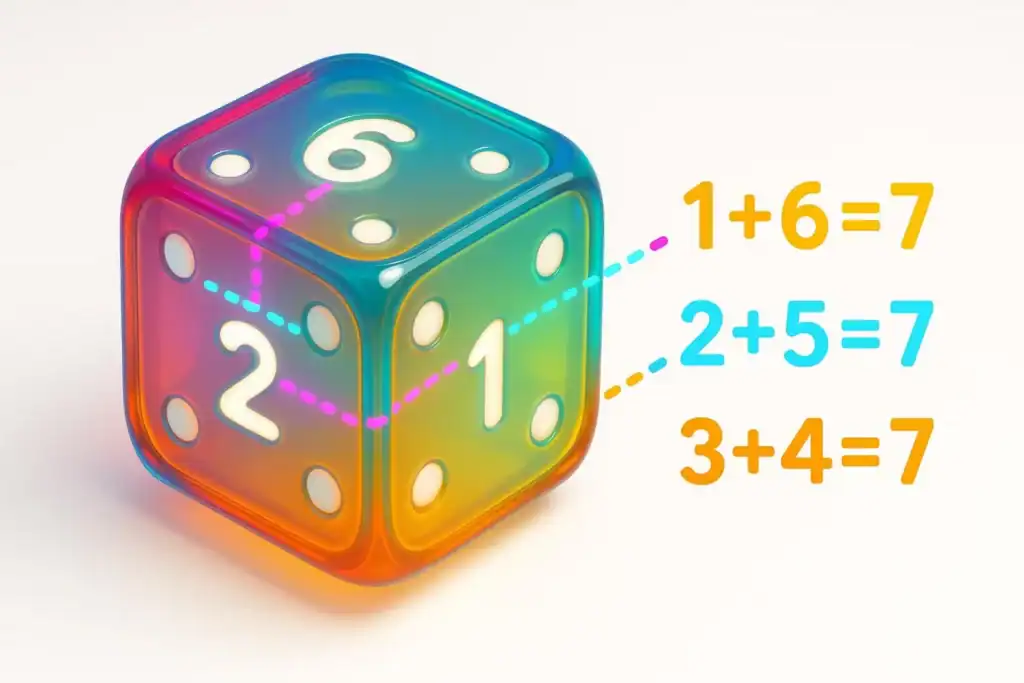
This setup helps keep dice fair and balanced. Next time you roll, you’ll spot the symmetry behind the dots.
2 Is the Only Even Prime Number
Prime numbers are bigger than 1 and have only two factors: 1 and the number itself. Examples are 3, 5, 7, and 11. Every even number (except 2) is divisible by 2, so it has more than two factors.
That makes 2 the only even prime. It stands alone and is a great way to explain primes and composite numbers to kids.
Zero Did Not Exist in Roman Numerals
Imagine doing math without zero. Ancient Romans did just that-their numeral system had no symbol for zero. This made hard calculations slow and clumsy.
Zero, as we use it today, came from ancient India around the 5th century. It changed math forever and made algebra, calculus, and modern computing possible. Zero is neither positive nor negative, and any number times zero equals zero. Its absence in Roman numerals shows how important zero is to math and technology.
The Number Pi (π) Doesn’t Have an End
Pi (π) is famous for measuring circles. It starts 3.1415926535… and goes on forever without repeating a pattern. That makes it an irrational number.
People celebrate Pi Day on March 14 (3/14). Some even memorize thousands of digits. Pi helps in engineering, physics, astronomy, and architecture, from bridges and arches to ancient wonders like the Pyramids of Giza. It shows kids that some ideas in math have no end.
Multiplying by Zero Results in Zero
No matter the number, if you multiply it by zero, the answer is zero. 5 × 0, 100 × 0, 39,323 × 0-all give zero.
This rule is a basic part of multiplication. It’s a simple pattern that helps kids build a strong base for harder math.
You Can Use Your Fingers to Learn the 9 Times Table
There’s a handy trick for the 9 times table using your fingers, from 9 × 1 to 9 × 10.
Hold both hands out, palms down. For 9 × 1, fold down your left pinky. Count fingers to the left (0) and to the right (9) to get 09, or 9. For 9 × 2, fold down your left ring finger. You have 1 finger on the left and 8 on the right-18. It’s a quick, visual way to remember.
The Digits of Multiples of 9 Add Up to 9
For any multiple of 9, if you add its digits, the sum is 9 or another multiple of 9 (which then adds to 9). Examples:
- 9 × 2 = 18 (1 + 8 = 9)
- 9 × 3 = 27 (2 + 7 = 9)
- 9 × 4 = 36 (3 + 6 = 9)
- 9 × 5 = 45 (4 + 5 = 9)
- 9 × 12 = 108 (1 + 0 + 8 = 9)
- 9 × 23 = 207 (2 + 0 + 7 = 9)
- 9 × 99 = 891 (8 + 9 + 1 = 18; 1 + 8 = 9)
This “Rule of 9” helps check answers and spot numbers divisible by 9 without long division.
The Only Number from 1-1000 with an ‘A’ Is 1000
If you spell out the numbers from one to nine hundred ninety-nine, none of them include the letter “a.” You only see “a” in “one thousand.”
This mix of language and numbers makes a fun brain-teaser and shows how number words are built.
What Are Some Easy Ways to Remember Math Tricks?
Math can be fun with a few simple tricks. These ideas turn hard topics into clear steps and help kids feel confident.
By spotting patterns and using catchy phrases, kids can turn abstract rules into something they can remember and use.
Recognizing Patterns in Numbers
Patterns are one of the best tools in math. The finger trick for 9 and the digit-sum rule for 9 are great examples.
Here’s another pattern with numbers made of 1s:
- 1 × 1 = 1
- 11 × 11 = 121
- 111 × 111 = 12321
- 1111 × 1111 = 1234321
This symmetrical pattern is both beautiful and easy to remember. Teaching kids to look for patterns helps them see how math is built, and it reduces the need to memorize everything.
Using Rhymes and Memory Aids
Short phrases and rhymes make rules stick. Memory aids (mnemonics) turn hard ideas into simple lines.
For the commutative property, try “For addition and multiplication, order doesn’t matter.” For order of operations, “Please Excuse My Dear Aunt Sally” (Parentheses, Exponents, Multiplication, Division, Addition, Subtraction) is a classic. These little hooks make rules easier to recall.
Fun Math Puzzles and Riddles
Games and puzzles make learning math feel like play. They build logic, strategy, and number sense while keeping kids engaged.
The “Birthday Paradox” shows that in a group of 23 people, there’s a 50% chance two share a birthday. Another puzzle is Kaprekar’s Constant (6174). Start with any four-digit number (not all digits the same), make the biggest and smallest numbers from its digits, subtract, and repeat-you’ll reach 6174. These puzzles make math feel like a treasure hunt.
How Do We See Math in the World Around Us?
Math is a language that describes the things we see. From seashell spirals to grocery aisles, math is everywhere-in nature and in human designs.
Pointing out real examples shows kids that math is about understanding how things work, not just about test scores.
Fibonacci Sequence in Nature
The Fibonacci sequence starts 0, 1 and each next number is the sum of the two before it: 0, 1, 1, 2, 3, 5, 8, 13, 21, 34, and so on.
Nature uses these numbers a lot. Sunflowers often have seed spirals that match Fibonacci numbers like 55 or 89, which gives tight packing. Pinecones show spiral counts that fit the sequence. Many flowers have 3, 5, 8, 13, or 21 petals. This helps kids see math as part of nature’s order.
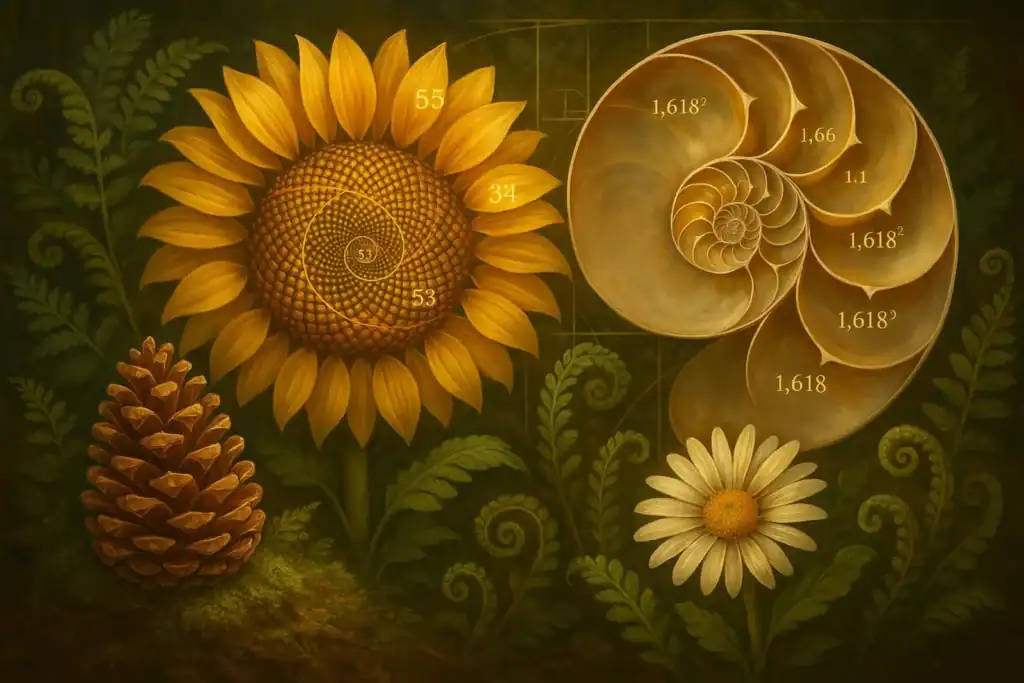
The Golden Ratio in Art and Architecture
The Golden Ratio (about 1.618) is a famous proportion used by artists and builders for pleasing designs. Many people think shapes that match this ratio look balanced.
You can find it in Greek buildings like the Parthenon, in paintings by Leonardo da Vinci, and even in how we judge facial proportions. Rectangles with this ratio often look well-balanced. This shows how math connects to beauty and design.
Shapes and Symmetry in Sports
Sports show math in action. A baseball diamond is a square with bases 90 feet apart. Basketball courts have set rectangular sizes and markings that guide play.
Sports gear also uses math. A soccer ball is built from pentagons and hexagons for good aerodynamics and strength. Olympic pools follow exact measurements. Golf balls have a set number of dimples placed in patterns to improve flight. These examples show how geometry shapes the games we love.
Math in Everyday Activities Like Shopping
We use math all the time while shopping. Comparing prices, reading “20% off,” estimating totals, and checking change all use math.
Budgeting, choosing the best package size, and reading the checkout display are more examples. These skills help kids handle money and make smart choices.
What Are Common Misconceptions and Surprising Truths About Math?
Math has its myths and surprises. Some ideas that seem obvious turn out to be wrong or more complex than they first appear. Challenging these beliefs can make math more engaging.
These facts invite careful thinking and show that there’s always more to learn. Our guesses can be off, and math can correct them in fun ways.
Math Is Not Just About Numbers
Many people think math is only numbers. Numbers matter, but math also studies patterns, structure, change, and space. It uses logic, symbols, and problem-solving.
Geometry looks at shapes and space. Algebra uses symbols and formulas. Probability and statistics study chance and data. Music and art use ratios and symmetry. Math is a way to describe and connect ideas, not just to count.
Some Numbers Appear More Often Than Others
In many real datasets, the leading digit is often 1 more than any other digit. This is called Benford’s Law. It shows up in things like populations, stock prices, and river lengths. The digit 1 appears first about 30% of the time, while 9 appears first about 4.6% of the time.
This pattern is common across many kinds of data, from money records to scientific results. It’s a neat example of math revealing patterns where we might expect randomness.
There Is Math Behind Card Tricks and Games
Magic tricks and card games often use math. If you shuffle a 52-card deck well, the exact order you get has probably never appeared before. That’s because 52 factorial (52!) is a number with 68 digits-bigger than the number of atoms on Earth.
Games like poker and blackjack rely on probability. Knowing the odds can help you make better choices. The Birthday Paradox also shows how probability can surprise us. These ideas show the math behind games and illusions.
How Can Kids Make Math More Fun?
Making math fun helps kids build strong skills and enjoy learning. When math feels like play, kids are more likely to explore, try, and grow.
There are many ways to do this, from games to real-life projects. This approach moves beyond memorizing and sparks curiosity and creativity.
Playing Math Games and Puzzles
Games and puzzles make practice feel like play. They build strategy, speed, and understanding without pressure.
Try “Math Baseball,” where correct answers move players around the bases, or “Math Facts Bingo,” where kids mark answers on cards. “101 and Out” uses dice and planning to hit a target score. Digital tools like Prodigy turn math practice into a quest with rewards that match each learner’s level. These ideas make math feel like a fun mission.
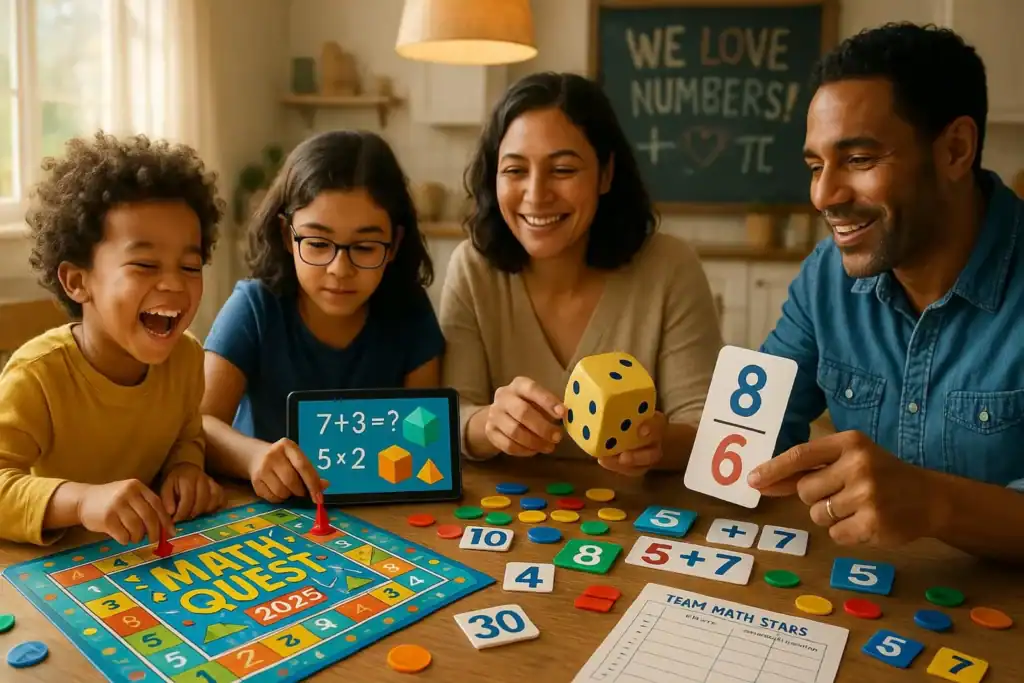
Celebrating International Day of Mathematics
Every March 14, people celebrate the International Day of Mathematics-also Pi Day (3/14). Themes often highlight that “Mathematics is Everywhere.”
Schools and families can plan math activities, share fun facts, or try special challenges. NASA even shares Pi-themed problems for grades 4-12 with handouts and answer keys. Joining in connects kids with a worldwide math community.
Exploring Math in Cooking and Baking
The kitchen is a great place to practice math. Recipes use fractions (like 1/2 cup), unit conversions, and simple arithmetic.
Baking is full of ratios. A common sugar cookie uses a 3:2:1 ratio (flour:fat:sugar). Doubling a recipe means multiplying; halving means dividing. This hands-on practice turns abstract ideas into real, tasty results.
Frequently Asked Questions About Math Facts for Kids
Kids ask great questions about math. Here are quick answers that explore fun corners of the subject. These bite-size ideas can spark even more curiosity.
From special numbers to surprising probability and shared rules used around the globe, these answers give fast, engaging insights.
What Is the Magic Number 6174?
Kaprekar’s Constant (6174) comes from a repeatable process. Pick any four-digit number with at least two different digits. Arrange its digits to make the biggest and smallest numbers, subtract the smaller from the bigger, and repeat. You will always reach 6174 in seven steps or fewer.
Example with 3524:
- Largest: 5432, Smallest: 2345 → 5432 − 2345 = 3087
- Largest: 8730, Smallest: 0378 → 8730 − 0378 = 8352
- Largest: 8532, Smallest: 2358 → 8532 − 2358 = 6174
This process shows a hidden pattern that feels like number magic.
What Is the Birthday Paradox?
The Birthday Paradox says that in a group of 23 people, there’s a 50% chance two share a birthday. That sounds unlikely, but it’s true.
We’re not looking for a match to one specific day. We’re checking all possible pairs. With 23 people, there are 253 pairs, and the small chances across many pairs add up. With 75 people, the chance of a shared birthday is about 99%. It’s a great example of how probability can trick our intuition.
Is Math the Same Everywhere in the World?
Yes. Math ideas and results are the same everywhere. No matter where you are, 2 + 2 = 4, the Pythagorean theorem works, and π has the same value. Number symbols (0, 1, 2, 3, …) are used widely, so people can share math across borders.
Teaching styles and terms can vary a bit (some say “math,” others say “maths”), but the ideas are the same. This common ground helps people around the world work together using shared rules of numbers and logic.

